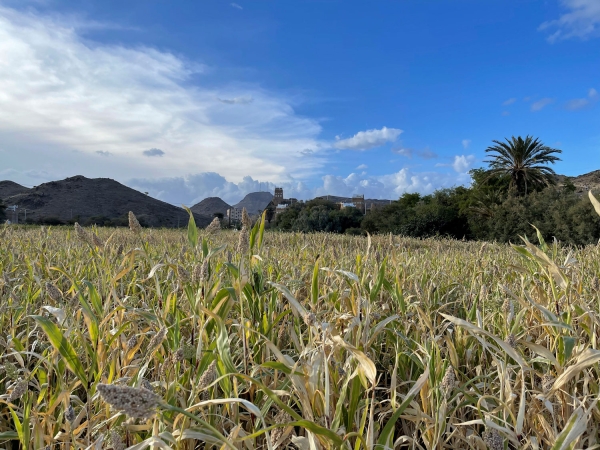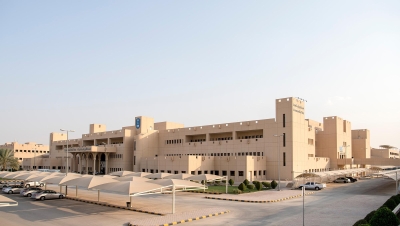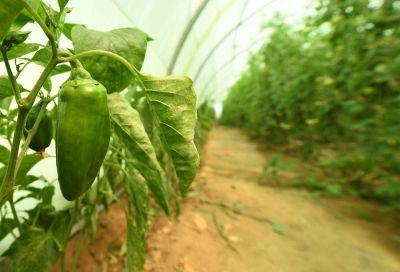

Corn Cultivation in the Kingdom of Saudi Arabia is primarily concentrated in the southwestern regions of the Kingdom due to their mountainous and plain terrain. These areas are ideal for farming because of the fertile soils, ranging from clay soil to loams, and the abundance of rainfall.
Sorghum is a significant food crop for the residents of Aseer Province, where it is commonly referred to as "al-Mutiyan" or "al-Amati" by the locals. It is considered one of the oldest cultivated crops and is planted in the summer as it requires high temperatures throughout its growth stages.
Corn cultivation in Aseer Province
In 2021, Aseer Province led all administrative provinces of the Kingdom in terms of agricultural holdings, with 69,466 holdings, accounting for 24.5 percent of the total in the Kingdom. The province’s agricultural lands are divided into two main types: Clay soils, located on the banks of valleys, which are irrigated by seasonal floods and rains, making them fertile for agriculture.
The second type, loams, represents the majority of the agricultural land, where farmers rely on rainwater and well water for irrigation. Additionally, agricultural terraces on mountain slopes are irrigated with seasonal rainwater.
Local farmers believe that the quality and abundance of their crops are closely tied to precise astronomical calculations, as well as the timing of planting during the four seasons of the year, known as "Hilal." In this tradition, each season or Hil begins on a Sunday and ends on a Saturday. Each solution consists of seven Nujum, and every one of the Nujum spans thirteen days, making a total of three months for the complete cycle.
Corn cultivation in Dhahran al-Janub Governorate
Dhahran al-Janub Governorate is known for its local corn harvest season, which unfolds in several well-organized stages, all carefully managed by the farmers. The process begins with plowing the farm, followed by winnowing and watering the clay-rich soil, leading up to the harvest, which spans approximately three months. The primary motivation for farmers to cultivate grains in their farms is for consumption by the population and to meet local consumption needs. Historically, corn has been a staple for the local population. Any surplus from the harvest is sold to nearby governorates and cities such as Najran, Khamis Mushayt, and Abha.
The sorghum variety grown in the province, known as "al-Mutiyan," is one of the oldest crops cultivated in the province. It is planted during the summer due to its need for high temperatures throughout its growth period. Sorghum is the second most important crop in the province, after wheat. Government subsidies support local farmers in continuing corn cultivation, both for human consumption and livestock feed. Farmers also produce small quantities of yellow corn, primarily used as livestock feed, along with maize.
Corn cultivation in Jazan Province
Farmers in Jazan Province await the main corn planting season, which begins in mid-October each year, known as "Mazarat al-Makhrat." Other planting seasons include al-Shabb, al-Khareef, and al-Saudat. The province's plains are known for producing various types of corn, such as white corn, red corn, Shahlah, Shahabi, Qahriyah, and Gharb. Before harvest, the corn crop passes through nine key stages: The tasselling stage, silking stage, blister stage, milk stage, dough stage, the initial "kernel" development, dent stage, where half of the kernel is visible, kernel milk stage, where the kernel is soft, maturity "al-Khadeer" stage, and physiological maturity, where the kernel turns red.
Al-Khadeer season arrives in mid-December every year and is well-known in Jazan Province. During this period, the corn reaches the maturity "al-Khadeer" stage, at which point the corn is harvested while still soft and green, making it easy to grind. This season is named "al-Khadeer" after the local enjoyment of the taste of al-Khadeer corn, which is a key ingredient in a variety of traditional dishes.
It represents a time of joy for the province's residents, as it preserves both their agricultural traditions and culinary heritage. Farmers benefit from selling their crops, whether as fresh al-Khadeer corn or red corn, in traditional markets, with some opting to sell it as animal feed in the province or to the livestock sector.
Agricultural Research Center in Jazan Province
The Agricultural Research Center in Jazan Province, under the Ministry of Environment, Water, and Agriculture, is conducting experiments on the productive efficiency of sorghum crops. This initiative is in collaboration with the Arab Center for the Studies of Arid Zones and Dry Lands "ACSAD." The goal of this research is to identify and localize new, high-yielding varieties of sorghum to meet the Kingdom's needs for both grains and green fodder. The project also seeks to take advantage of the rainy season by using rain-fed farming methods to test short-season varieties.
Related quizzes

